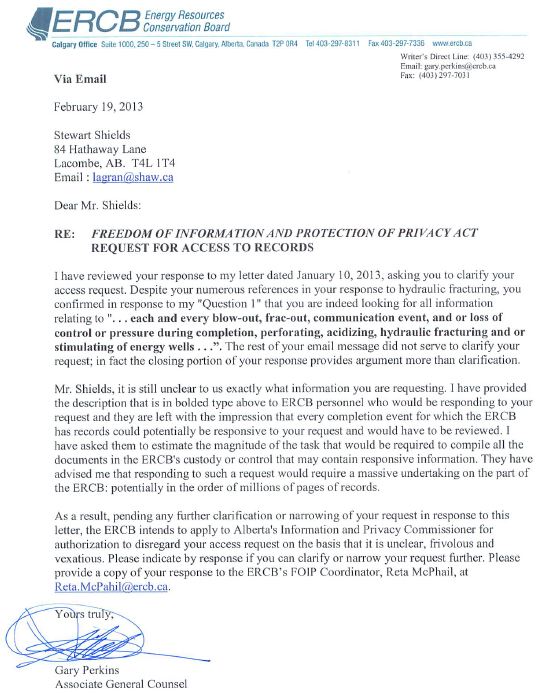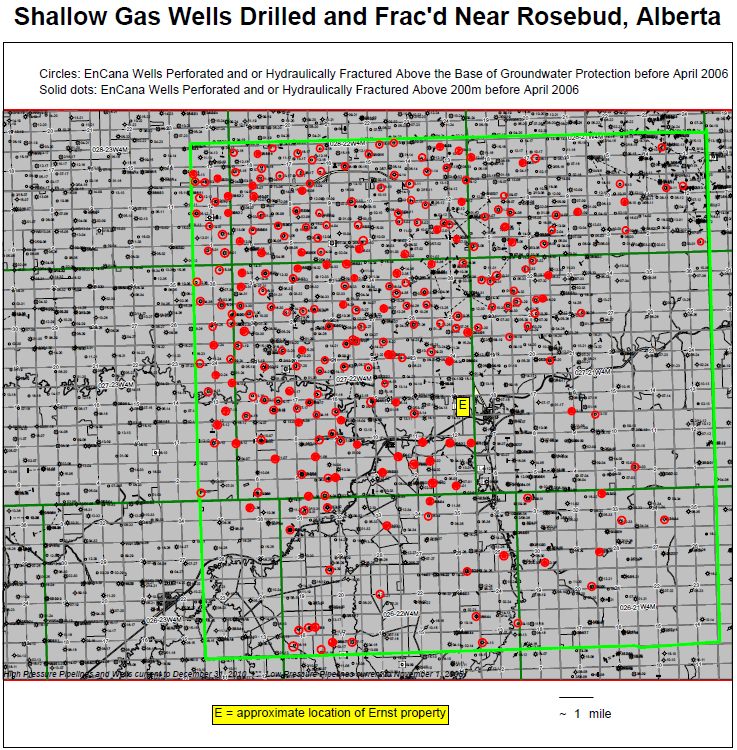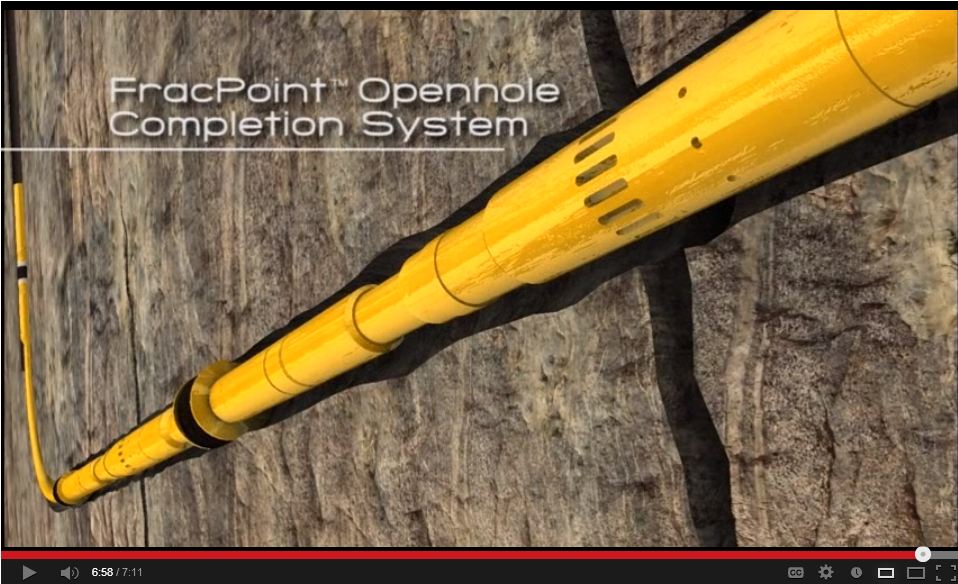ERCB Releases Hydraulic Fracturing Directive Press Release by Alberta Energy Resources Conservation Board, May 21, 2013 16:21 ET
The Energy Resources Conservation Board (ERCB) has today issued Directive 083: Hydraulic Fracturing – Subsurface Integrity (Directive 083) following a two-month stakeholder consultation period.
The release of ERCB Directive 083 represents a notable enhancement to existing regulatory oversight and monitoring as resources development continues and technology adapts.
The ERCB received significant feedback on the draft hydraulic fracturing directive following its issuance on December 6, 2012 through to the close of the feedback on February 4, 2013.
Further modifications were made to Directive 083 based on stakeholder feedback. Some of these modifications include:
- Additional requirements for wellbore integrity, design and testing, including the option for single- and dual-barrier design.
- Conduct comprehensive risk assessments related to interwellbore communication and nonsaline* aquifers prior to the start of hydraulic fracturing operations.
- Conduct modeling prior to hydraulic fracturing operations to reduce the likelihood of interwellbore communication and prevent nonsaline aquifers from being adversely affected.
Industry will be required to adhere to all regulatory changes and additions when the Directive comes into effect in August 2013.
Over the last 75 years, the ERCB has developed and enforced regulations to ensure the responsible development of Alberta’s oil and gas resources. Constantly working to improve and ensure the relevancy of all regulations, the ERCB reviews and updates its rules in light of new issues, risks, opportunities, and challenges and adapts as technology, experience, and social expectations have evolved.
This news release, stakeholder feedback summary and ERCB responses, and an overview of the regulatory changes can be found at: ercb.ca
* Please see definition of nonsaline and saline water in Backgrounder.
BACKGROUNDER
Hydraulic fracturing directive
Hydraulic fracturing is a well completion technique used in the development and recovery of oil and gas resources.
The process consists of injecting large volumes of water and sand, as well as small volumes of chemical additives, at high pressures into oil and gas formations. The high-pressure fluid injections create fractures in the rock formation. The sand remains in these fractures, creating a pathway that enables fluids and gas to flow freely into the well. A portion of the injected fluids flow back up to the surface through the well and into storage facilities for containment, transportation, and eventual disposal.
The ERCB is committed to monitoring new oil and gas recovery methods to ensure that they are safe and responsible. For this reason, the ERCB began a review of the operational hazards and associated risks with hydraulic fracturing.
The ERCB’s review identified three specific areas that required further regulatory response: maintaining well integrity, interwellbore communication, and fracturing operations at shallow depths.
A draft hydraulic fracturing directive was issued on December 6, 2012 for a two-month consultation period. During the consultation period, the ERCB received over 30 submissions to assist with the development of these regulations.
Through Directive 083, the ERCB has developed a strict and proactive regulatory response to the following identified issues related to hydraulic fracturing in Alberta.
Maintaining Well Integrity
Well integrity is lost when damage to casing, cement, or surface equipment has the potential to compromise the proper use of the well and could impact public safety or the environment.
The ERCB has observed that for hydraulic fracturing operations, there is an emerging trend toward the use of single-barrier wellbore construction, rather than dual-barrier construction, to provide a secure pathway for fluid injection and recovery from the reservoir. While the ERCB has had no reports of single-barrier well systems losing integrity, the introduction of enhanced regulations will provide an added measure of protection.
The ERCB believes that the risks to well integrity associated with single-barrier well systems can be effectively managed by an operator. The new directive requires licensees to demonstrate that operational risks have been considered in the selection and design of the wellbore construction and to monitor and test to ensure that well integrity is maintained.
These testing requirements will provide the ERCB with the appropriate information to monitor and assess the behaviour and responsiveness of single-barrier systems undergoing hydraulic fracturing and readjust requirements if required.
Interwellbore Communication
Interwellbore communication occurs when fluid and/or pressure from hydraulic fracturing operations impact a nearby oil or gas well.
To address the risks associated with interwellbore communication, the proposed directive requires licensees to carry out a risk assessment and prepare a well control plan to manage unintended interwellbore communications and reduce the impacts if a communication event occurs.
The ERCB believes that prevention and mitigation through proper planning and execution will enable licensees to effectively manage risks associated with interwellbore communication.
Fracturing Operations at Shallow Depths
Water resources are a valuable provincial asset. For this reason, the ERCB takes a cautious and conservative approach to hydraulic fracturing operations conducted at shallow depths.
Current regulatory requirements for shallow fracturing operations, outlined in Directive 027, focus on shallow zones up to 200 metres below the surface. Given a favourable economic environment, zones between 200 and 600 metres (depths above the base of groundwater protection in many areas) may also be subject to future development.
Under the directive, all licensees carrying out hydraulic fracturing operations in this zone must:
- Conduct a risk assessment.
- Observe prescribed setbacks for water wells and top of bedrock.
- Use environmentally friendly chemical additives or fluid compositions above the base of groundwater protection. [what happened to non-toxic?]
Definitions
Nonsaline Water
Water with less than 4000 mg/L of total dissolved solids. Often referred to as fresh water.
Saline Water
Water that has a total dissolved solids content exceeding 4,000 milligrams per litre (mg/L). Often referred to as brackish water.
Bulletin 2013-19 on release of Directive 083: Hydraulic Fracturing – Subsurface Integrity, May 21, 2013
Directive 083: Hydraulic Fracturing – Subsurface Integrity by ERCB, Released May 21, 2013, Effective date: August 21, 2013 [There is no mention of mandatory baseline water well and spring testing before frac’ing. In June 2013, the oil and gas industry will finance 100% of the new all-in-one energy regulator and control Alberta’s fresh water]
[Refer also to:
Could it be any clearer? An Albertan’s request for information by Admin, May 20, 2013
Albertan requests information from the regulator for “each and every blow-out, frac-out, communication event, and or loss of control or pressure during completion, perforating, acidizing, hydraulic fracturing and or stimulating of energy wells” in Alberta.
ERCB’s General Council responds and threatens to apply to Alberta’s Information and Privacy Commissioner for authorization to disregard the access request “on the basis that it is unclear, frivolous and vexatious”
“Responding to such a request would require a massive undertaking on the part of the ERCB: potentially in the order of millions of pages of records.”

2013 How Alberta Will Fight Fracking Folk Hero Jessica Ernst, In famous flaming water case, regulator to argue ‘no duty of care’ to landowners or groundwater Gaz de schiste – Jessica continue son procès
2013 Wheatland County in Alberta pushes fracking resolution
FrackingCanada: Community Voice The Campbells Suffer Test after Test Confirming Sour Thermogenic Industry Gas in their Drinking Water; No Water Repair or Alternate Safe Water Provided
Development in Rosebud, water will be upgraded to make sure it safe and clean – how?
In Alberta And B.C.: Stephen Harper Destroying The Rule Of Law
Fracking. The One Per Cent. Collapsing Canadian Courts. Jessica Ernst
Alberta Fracking. Jessica Ernst Versus The Corporate/Government Enemy. (A Case For History.) La fracturation hydraulique, le Canada et la justice
Hydraulic Fracturing [“Fracking”] Worldwide, Answers Not Forthcoming, Questions Not Allowed. Jessica Ernst of Rosebud, Alberta. Encana Corporation. Market Manipulation. Derivative Bubbles and The Fracking Wars Le fracking – pas de réponses, interdit de poser des questions
Fracking: Feds Throw Wrench in High Profile Lawsuit Judge suddenly promoted; plaintiff Ernst sees strategy to ‘delay and exhaust.’ Gaz de houille – le fédéral veut décourager Jessica Ernst
Alberta’s Top Judge to Hear High Profile Fracking Case Ernst versus Encana – les juges jouent à la chaise musicale
EnCana’s perfs and fracs Above the Base of Groundwater Protection at Rosebud, Alberta – before April 2006, many more wells continue to be perforated and frac’d Above the Base of Groundwater Protection within the map area and beyond.
Slide from: Is hydraulic fracturing safe and sustainable? Presentation by Jessica Ernst on May 3, 2011 in New York at the United Nations 19th Commission on Sustainable Development.
Click to get PDF, zoom in for legal land descriptions. Black are deeper energy wells, conventional and unconventional. Records show some Encana wells with open hole completions around Rosebud]
WATCH FracPoint Openhole Fracture Completion System by Baker Hughes Inc., October 21, 2010 FracPoint™ openhole fracture completion system precisely and reliably isolates multiple zones in open and cased holes. The system establishes openhole isolation between zones, zone lobes, or fault lines so fracture fluid is delivered where needed for maximum effect. Pinpoint fracture placements without cementing for improved initial productivity, accelerated reservoir drainage, and faster [return on investment].


